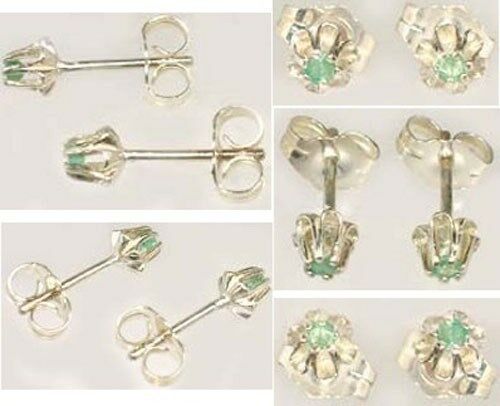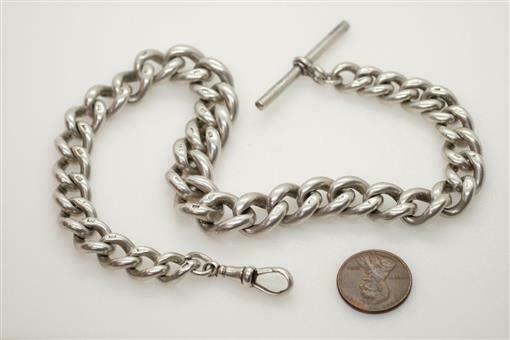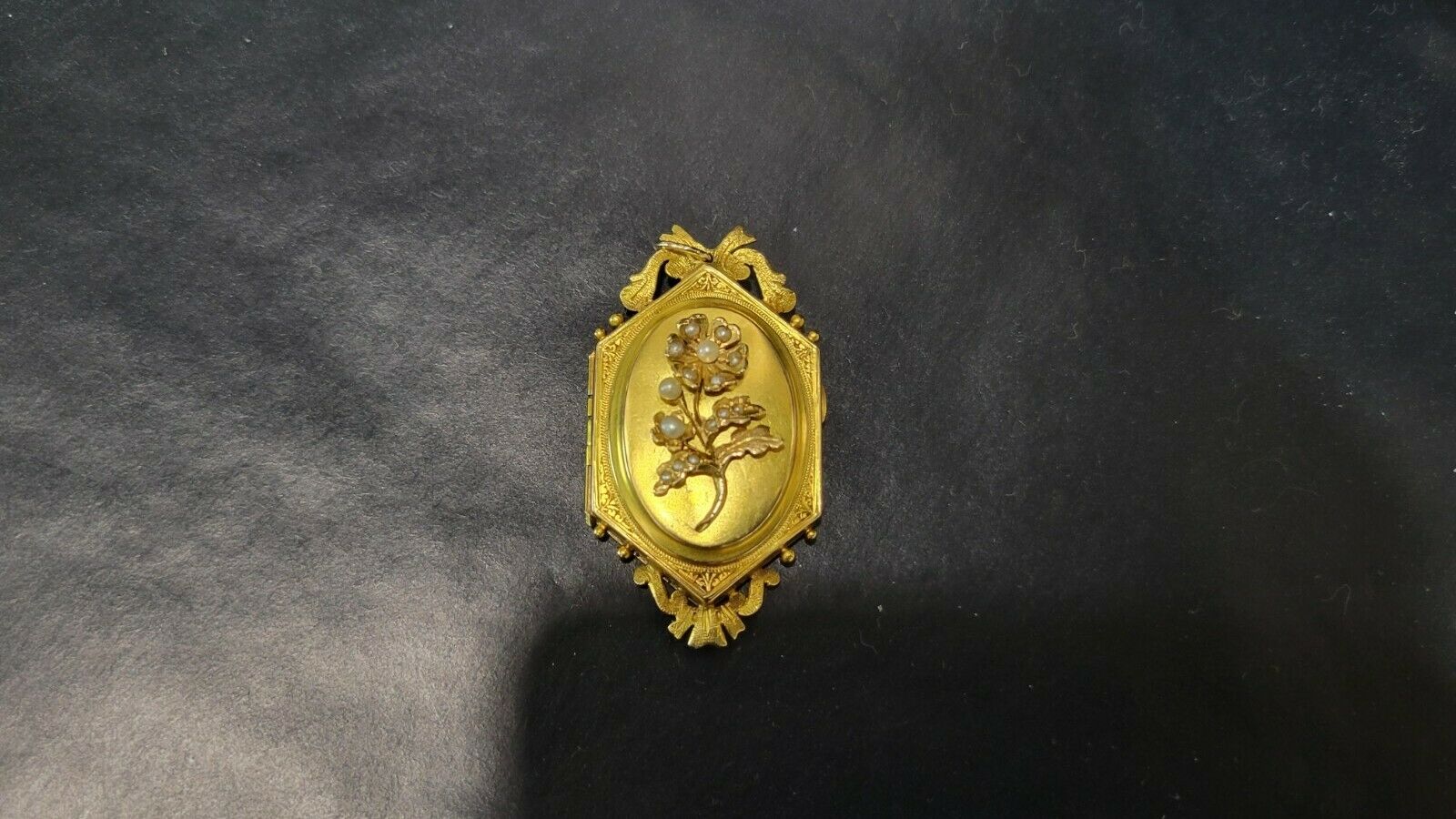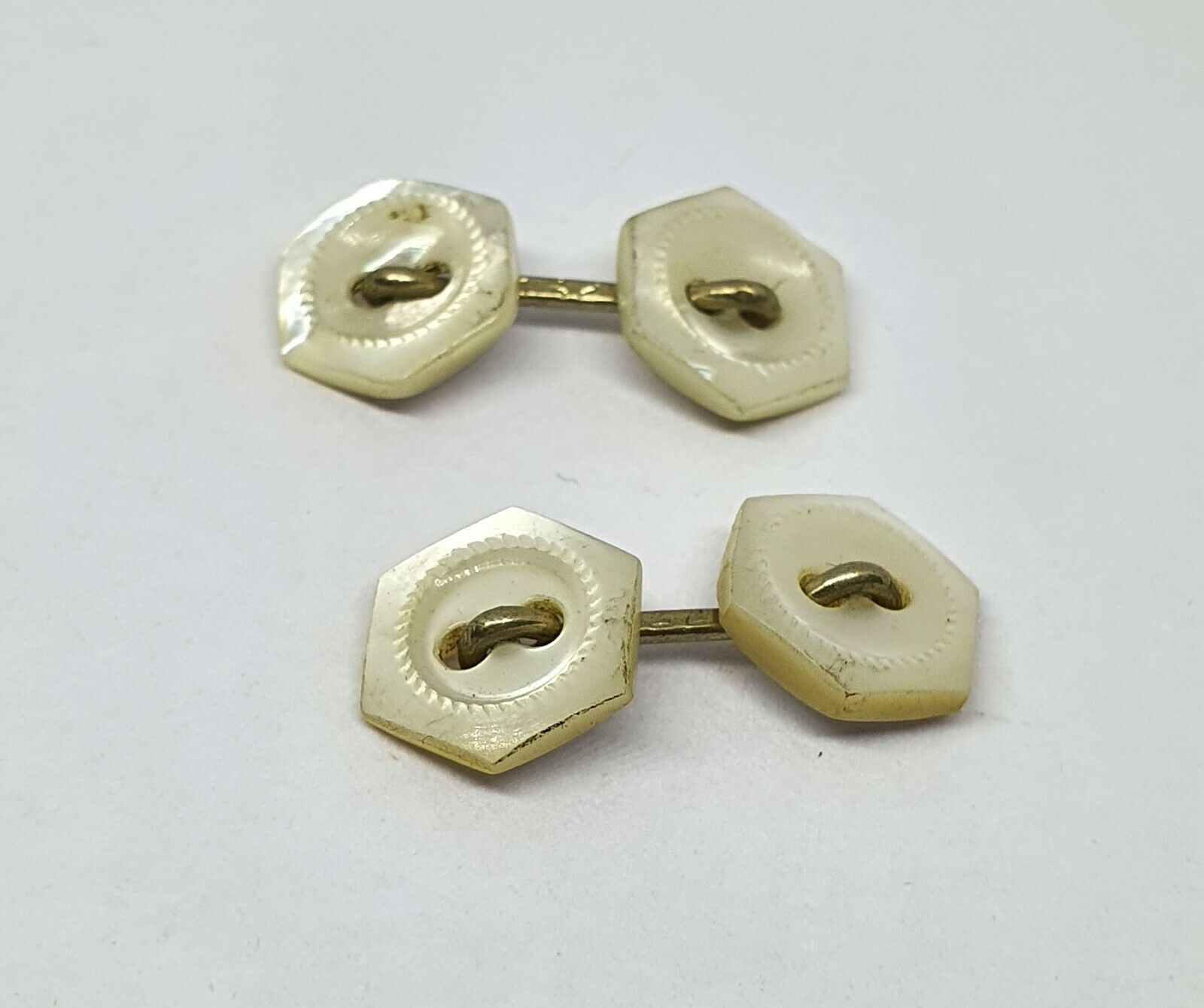-40%
19thC Antique Emerald Gem of Irish Celtic King of Ireland Henry II Russian Czars
$ 31.67
- Description
- Size Guide
Description
Two Very Good Quality Antique Genuine Natural Siberian Hand Crafted Faceted Emeralds. Set into High Quality Solid Sterling Silver Buttercup Style Ear Studs.CLASSIFICATION:
Faceted Emerald Rounds.
ORIGIN:
The Ural Mountains (Siberia), Russia. 19th Century.
SIZE
: Diameter: 1 1/2mm. Depth: 1mm. All measurements approximate
WEIGHT
: 0.04 carats (combined weight).
NOTE: These earring settings are also available in solid 14kt gold. Other setting styles (euro clicks, lever backs, kidney wires, ball/stud dangles) are available upon request, both in sterling silver, as well as 14kt solid gold and in 14kt gold fill.
NOTE: If you would like only the gemstones, and not the settings, we can dismount the gemstones and offer you the gemstones without the settings. Just let us know, and yes, we’ll discount the price by the cost of the settings.
DETAIL:
Henry II, when he was made King of Ireland in 1171, was given a large emerald ring, and from that time forward green emeralds were associated in Ireland with royalty. To Imperial Russia’s Czars (Kings), emeralds were the most prized of the Russian Crown Jewels. Russian and Renaissance European astrologers and mystics recommended wearing a gold ring set with emerald on the little finger to protect the wearer from mental distress, frequent injuries, or loss of wealth. Renaissance medical practitioners ground up emerald with laudanum, an opium derivative, as a medicine for fevers and other health ailments. In centuries prior during the Middle Ages shamans and magicians believed that emeralds enabled them to foretell future events if put on the tongue or worn on the left side of the body. In many legends of King Arthur, the Holy Grail (the cup used to catch Christ’s blood at the crucifixion) is described as being fashioned from a large emerald. Charlemagne the Great (ruler of a vast eighth century Frankish Kingdom) had a large and famous collection of emeralds.
Celebrating our historical legacy we offer two simply superb, exceptionally good quality natural emerald precious gemstones from the Southern Urals of (Siberia) Russia. The gemstones were hand crafted and faceted by a 19th century Russian artisan, part of an heritage renown for the production of the elaborate gemstones and jewelry of the Czars of Medieval, Renaissance, and Victorian Russia. Emeralds are nearly 100 times rarer than diamonds, and there are few opportunities to acquire such good quality natural emeralds at reasonable prices. The best specimens can bring over ,000 a carat, and even emerald of more modest pedigree can still be quite expensive. These gorgeous precious gemstones possess the crystal clear pale mint green color possessed by only the best quality emeralds. Originally used in indigenous jewelry, these are very nice quality specimens no worse than eye clean. You can see in these photo enlargements that there are very few discernible imperfections.
Most commonly emeralds are blemished internally with various bits and pieces known as "jardin", French for "garden". Most emeralds literally have a garden of internal blemishes, and most emeralds consequentially are not transparent as are these, rather they are merely translucent. Unfortunately most transparent “emeralds” sold even by the largest and most reputable retailers in the United States are synthetic (read the fine print; and the same is true of rubies and sapphires). However Russia has produced good quality emerald for centuries from the region of Siberia. Why would you buy synthetic emeralds at the mall when you can have the real thing?
These particular precious gemstones possess the crystal clear green color characteristic of good quality emeralds, pleasing colorful and transparent, albeit diminutive. The earring settings are of contemporary origin. They are high quality settings manufactured by one of the USA’s leading semi-custom mount producers. They are constructed of sterling silver; they are not cheap, silver electroplated earrings. It is genuine sterling silver, designed to last a lifetime. It's a first-class piece of jewelry throughout. There are many other setting styles available (euro clicks, lever backs, kidney wires, ball/stud dangles) which, in sterling silver, could be substituted for either no or nominal extra cost. Please write us, ask, we can send you photos of the various alternative earring styles available. We can also reset the gemstones into 14kt solid gold or 14kt gold fill upon request.
As might be expected under magnification the gemstones show the unmistakable, hallmark characteristics of having been hand crafted. The coarseness of the 19th century finish is considered appealing to most gemstone aficionados, and is not considered a detriment, or detract from the value of such gemstones. These characteristics are not only expected of hand-finished gemstones, many believe that such antique hand-crafted gemstones possess much greater character and appeal than today's mass-produced, laser-cut gemstones. Unlike today’s computer controlled machine produced gemstones that approach flawlessness in a perfect finish, the cut and finish of handcrafted gemstones like these is the legacy of an artisan who lived two centuries ago.
Handcrafted though they may be these gemstones have great luster and sparkle, and are absolutely transparent, but they are not entirely flawless. True, the blemishes they possess are virtually invisible to the naked eye, and to use trade jargon the gemstones can be characterized as "eye clean". However magnified as they are in the accompanying photo enlargements you might be able to discern a minute blemish or two within the stones. Of course much the same may said about almost any natural gemstone. An absolutely flawless gemstone simply is not the rule in nature. Most absolutely flawless gemstones will upon close examination be revealed to be synthetic. You might also notice under magnification occasional irregularities in the cut and finish. Naturally these characteristics are not only expected of hand-finished gemstones, you must also consider that two centuries ago the mining techniques prevalent did not allow the ultra deep mining operations which are so common today.
Keep in mind that two centuries ago mankind was more or less limited to surface deposits or near surface deposits of semi-precious gemstones. Higher quality gemstones which today are routinely mined from beneath hundreds of meters, even kilometers beneath the earth's surface, were simply inaccessible. It is precisely for these reasons antique gemstones must be appreciated as antiques first, gemstones second. The relatively superlative quality of contemporary gemstones routinely mined from deep beneath the earth's surface today were simply not accessible two centuries ago, or at least, only rarely so. However for most, the unique nature and character of these antique gemstones more than makes up for the blemishes found within the gemstones, as well as the cutting irregularities common to handcrafted gemstones, all of which are by and large (if at all) are only visible under magnification.
EMERALD HISTORY:
The name "emerald" comes indirectly from the Greek "smaragdos", a name that was given to a number of gemstones having little in common except a green color. Emeralds have been since ancient times one of the most highly valued of all gemstones. Even today gem-quality emeralds are so rare they are considered more valuable than diamonds. Emeralds were traded at the earliest known gem market in Babylon 6,000 years ago. One of the major sources for the ancient world of the classical Mediterranean’s emerald were Egyptian mines near the Red Sea, which were worked as early as 2000 B.C., perhaps even as far back as 3,000 B.C. Ancient Egyptian texts document the use of emerald during the life of Pharaoh Sesostris III in the 19th century B.C.
To the ancient Egyptians, emerald's green color stood for fertility and rebirth, and emeralds were used to treat eye diseases. The earliest references to emerald in the classical world of the Mediterranean are attributable to Aristotle, fourth century B.C. philosopher, student of Plato, and teacher to Alexander the Great. Aristotle wrote that owning an emerald increased the owner’s importance in presence and speech during business, gave victory in trials, helped to settle litigation, and that ground into a fine powder and made into a lotion, emerald could also be used to comfort and sooth eyesight. He also stated an emerald worn as a talisman would prevent epilepsy, and recommended that all children be so adorned with an emerald amulet.
The ancient Greeks regarded the emerald as the sacred stone of the Goddess of Love, Aphrodite (as did the Romans, who knew Aphrodite as “Venus”) and of the Earth Goddess, and believed the gemstone would protect lovers from unfaithfulness. The ancient Greeks worked the Egyptian emerald mines during the time of Alexander the Great and throughout the Ptolemaic Dynasty (that period of time when Hellenic Greeks ruled ancient Egypt). In fact Alexander himself wore a large emerald mounted onto his belt. In the first century B.C. one of the (Macedonian) Ptolemaic kings had an emerald engraved with the portrait of Lucullus, the great Roman general. He then presented it to him when Lucullus visited Egypt. These same mines later provided the last Ptolemaic monarch, Cleopatra VII, Queen of Egypt, the wonderful emeralds she was often depicted and described as wearing.
Though lost for many centuries, extensive remains of "Cleopatra's Mines" were discovered about 1817; and are located near the Red Sea coast, east of Aswan. Emeralds were also quite favored in the Roman Empire, especially by Roman Emperors, emeralds oftentimes used as Roman crown jewels. The Roman Emperor Nero reportedly watched chariot races and gladiator contests through lenses made of emeralds, as he found the color to be calming. Roman texts of the second century B.C. recorded that emerald “influences every kind of business, and if you remain chaste while you wear it, it adds substance to both the body and the speech.” Romans also considered light-colored emeralds to be “unripe”, believing that an emerald becomes darker as it matures. During the Roman era emerald was discovered in Germany near present-day Salzburg, and production continued through the Middle Ages before the deposit played out.
To the early Christians, the emerald was a symbol for immortality and faith, and also was generally regarded as a symbol of kindness. These beliefs, though held by both preceding Greek and Roman culture, probably originated with Egyptian and Sumerian culture. In the ancient Near East, the ancient Babylonians believed that each emerald stone contained a goddess. The Sumerians believed that an emerald worn on the little finger of the left hand would cure inflammation of the eyes. In ancient Islam (both in the Near East as well as in Mogul India), green was a holy color symbolizing the unity of Islam, and an amulet of emerald was often engraved with a verse from the Koran. And in both ancient India as well as ancient China, emerald was worn as a talisman thought to bring good luck.
During the Middle Ages an emerald amulet was believed to keep a woman chaste. Medieval shamans and magicians believed that emeralds enabled them to foretell future events if put on the tongue or worn on the left side of the body. Emeralds were also believed to reveal what was true or false, and to give eloquence in speech and make people more intelligent and honest. Worn as a talisman, emerald was regarded as a sure antidote for enchantments and spells, was believed to repel evil spirits, and it was believed that a high quality emerald would change hues to alert the wearer to impending danger. In many legends of King Arthur, the Holy Grail (the cup used to catch Christ’s blood at the crucifixion) is described as being fashioned from a large emerald.
Charlemagne the Great (ruler of a vast eighth century Frankish Kingdom) had a large and famous collection of emeralds, and Henry II, when he was made King of Ireland in 1171, was given a large emerald ring. In the Renaissance medical practitioners ground up emerald with laudanum, an opium derivative, as a medicine for certain fevers and ailments. “Cleopatra’s Mines” in Upper Egypt provided Europe with emeralds all the way through the 16th century A.D. Though by today's standards the ancient Egyptian mines produced relatively small and poor quality gemstones, in the days of the Russian Czars, emeralds were the most prized of the Russian Crown Jewels. The famous 16th century Italian Goldsmith Benvenutto Cellini commented in his writings that emeralds fetched four times the price of diamond.
Renaissance era astrologers and mystics recommended wearing a gold ring set with emerald on the little finger to protect the wearer from mental distress, frequent injuries, or loss of wealth. In the 18th century, Colombian emeralds started reaching Europe as a result of the Spanish plunder of South American Indians. In fact treasure hunters seeking wrecks of Spanish galleons are occasionally rewarded by the discovery of emeralds lost by the conquistadors long ago. Prior to the coming of the Spanish Conquistadors, South American natives had been working emerald mines for at least several centuries, and also held the gemstone in high regard. In fact, emeralds were worshiped by the Incas who had an emerald goddess to which they sacrificed their children.
Though the world’s best emeralds are generally regarded as being Colombian, emeralds are also produced in Brazil, Pakistan, Russia, India, and throughout Africa. Very large specimens are found in Siberia (though of a lighter hue than Colombian emerald) and in India (though of generally very low quality), and in the United States emeralds have been found in North Carolina. Emeralds are a variety of the mineral beryl (as are aquamarine, morganite, goshenite, heliodore, and bixbite). Although beautiful in color, emerald tends to be very "dirty" in that it typically contains a lot of internal blemishes known as "jardin," French for "garden". Seen under magnification, emerald reveals internal blemishes that resemble the foliage in a garden, or moss.
Emerald gemstones were amongst the dearest treasures of the gem markets of Babylon, and today - nearly six thousand years later - this lovely stone remains one of the most valuable objects in the world. Even today flawless specimens of good color and size are exceedingly rare and command higher prices than diamonds of equal weight. Throughout the history of the ancient world, gemstones were believed capable of curing illness, possessed of valuable metaphysical properties, and to provide protection. Found in Egypt dated 1500 B. C., the "Papyrus Ebers" offered one of most complete therapeutic manuscripts containing prescriptions using gemstones and minerals. Gemstones were not only valued for their medicinal and protective properties, but also for educational and spiritual enhancement.
In the ancient world emerald was loved and worshipped for thousands of years as a symbol of the eternal cycle of life. Emerald was believed to possess magical regenerative properties, and was widely used for medicinal purposes in the ancient world. It was believed to prevent infection and diseases and was used by expectant mothers to keep unborn children safe from complications during childbirth. It was even used to treat cholera, dysentery, and malaria. There were many ailments that were believed to be cured by emeralds. Disorders that emeralds have been used for include colic, burns, ulcers, headaches, tension, influenza, epilepsy, high blood pressure, heart disorders, neuralgia, cancer, skin disorders, dysentery, syphilis, fevers, nausea, vomiting, indigestion, asthma and anemia. It was believed to strengthen the heart and circulatory system, as well as the bladder and kidney functions.
Emerald was also used to treat forgetfulness, epilepsy, stammering and even insanity. The emerald was also once prized as an antidote in cases of poisoning. Even today, the powder of poorer quality emeralds is used in folk medicines in China. On the metaphysical plane, emerald was used by shamans and magicians to enhance clairvoyance, thus helping to predict future events. Emerald was believed to detoxify negativity and transform it into positive emotional energy; to stabilize, soothe, and create a sense of security, harmony, faith, hope, and closeness to God. Emerald was believed to keep the mind in excellent condition and promote a healthy memory and enhance intelligence, enabling one to think clearly about past, present, and future.
Emeralds were often used by politicians and public speakers with the belief that they would promote creativity and eloquence, and to improve the wearer’s intuition, thereby enhancing perceptive abilities. Emeralds were also believed to bring good fortune (particularly in ancient China), and to foster kindness, sympathy, and truthfulness. There have even been times in history when the emerald was believed to be able to control one’s passions and lusts. They were also believed to help one express love, devotion, and adoration, and throughout the ancient world, wearing an emerald talisman was believed to drive away evil spirits.
Domestic shipping (insured first class mail) is included in the price shown. Domestic shipping also
includes
USPS Delivery Confirmation (you might be able to update the status of your shipment on-line at the
USPS Web Site
). Canadian shipments are an extra .99 for Insured Air Mail; International shipments are an extra .99 for Air Mail (and generally are NOT tracked; trackable shipments are EXTRA).
ADDITIONAL PURCHASES
do receive a
VERY LARGE
discount, typically about per item so as to reward you for the economies of combined shipping/insurance costs. Your purchase will ordinarily be shipped within 48 hours of payment. We package as well as anyone in the business, with lots of protective padding and containers.
We do NOT recommend uninsured shipments, and expressly disclaim any responsibility for the loss of an uninsured shipment. Unfortunately the contents of parcels are easily “lost” or misdelivered by postal employees – even in the USA. If you intend to pay via PayPal, please be aware that PayPal Protection Policies REQUIRE insured, trackable shipments, which is INCLUDED in our price. International tracking is at additional cost. We do offer U.S. Postal Service Priority Mail, Registered Mail, and Express Mail for both international and domestic shipments, as well United Parcel Service (UPS) and Federal Express (Fed-Ex). Please ask for a rate quotation. We will accept whatever payment method you are most comfortable with. If upon receipt of the item you are disappointed for any reason whatever, I offer a no questions asked return policy. Send it back, I will give you a complete refund of the purchase price (less our original shipping costs).
We travel to Russia each year seeking antique gemstones and jewelry from one of the globe’s most prolific gemstone producing and cutting centers, the area between Chelyabinsk and Yekaterinburg, Russia. From all corners of Siberia, as well as from India, Ceylon, Burma and Siam, gemstones have for centuries gone to Yekaterinburg where they have been cut and incorporated into the fabulous jewelry for which the Czars and the royal families of Europe were famous for. My wife grew up and received a university education in the Southern Urals of Russia, just a few hours away from the mountains of Siberia, where alexandrite, diamond, emerald, sapphire, chrysoberyl, topaz, demantoid garnet, and many other rare and precious gemstones are produced. Though perhaps difficult to find in the USA, antique gemstones are commonly unmounted from old, broken settings – the gold reused – the gemstones recut and reset.
Before these gorgeous antique gemstones are recut, we try to acquire the best of them in their original, antique, hand-finished state – most of them centuries old. We believe that the work created by these long-gone master artisans is worth protecting and preserving rather than destroying this heritage of antique gemstones by recutting the original work out of existence. That by preserving their work, in a sense, we are preserving their lives and the legacy they left for modern times. Far better to appreciate their craft than to destroy it with modern cutting. Not everyone agrees – fully 95% or more of the antique gemstones which come into these marketplaces are recut, and the heritage of the past lost. But if you agree with us that the past is worth protecting, and that past lives and the produce of those lives still matters today, consider buying an antique, hand cut, natural gemstone rather than one of the mass-produced machine cut (often synthetic or “lab produced”) gemstones which dominate the market today.
Our interest in the fabulous history of Russian gemstones and the fabulous jewelry of the Czar’s led to further education and contacts in India, Ceylon, and Siam, other ancient centers of gemstone production and finishing. We have a number of “helpers” (family members, friends, and colleagues) in Russia and in India who act as eyes and ears for us year-round, and in reciprocity we donate a portion of our revenues to support educational institutions in Russia and India. Occasionally while in Russia, India, Siam, and Ceylon we will also find such good buys on unique contemporary gemstones and jewelry that we will purchase a few pieces to offer to our customers here in America. These are always offered clearly labeled as contemporary, and not antiques – just to avoid confusion. We can set most any antique gemstone you purchase from us in your choice of styles and metals ranging from rings to pendants to earrings and bracelets; in sterling silver, 14kt solid gold, and 14kt gold fill. When you purchase from us, you can count on quick shipping and careful, secure packaging. We would be happy to provide you with a certificate/guarantee of authenticity for any item you purchase from us. There is a fee for mailing under separate cover. Please see our
"ADDITIONAL TERMS OF SALE."
TRANSLATE
Arabic
Chinese
French
German
Greek
Indonesian
Italian
Hindi
Japanese
Korean
Swedish
Portuguese
Russian
Spanish









